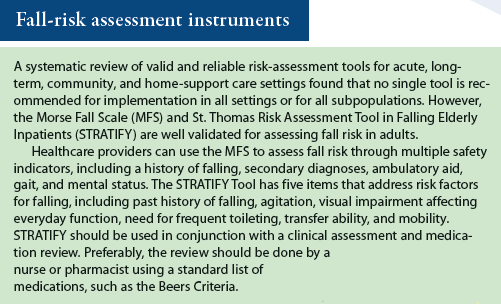Dementia Fall Risk Can Be Fun For Anyone
Dementia Fall Risk Can Be Fun For Anyone
Blog Article
9 Easy Facts About Dementia Fall Risk Described
Table of ContentsThe 7-Minute Rule for Dementia Fall RiskThe Main Principles Of Dementia Fall Risk Some Known Facts About Dementia Fall Risk.Dementia Fall Risk Can Be Fun For Everyone
An autumn risk analysis checks to see how most likely it is that you will drop. It is mostly done for older grownups. The assessment generally includes: This includes a collection of questions concerning your overall health and wellness and if you have actually had previous falls or issues with equilibrium, standing, and/or walking. These devices examine your strength, equilibrium, and stride (the way you walk).STEADI consists of screening, evaluating, and treatment. Treatments are referrals that may decrease your threat of dropping. STEADI consists of 3 actions: you for your threat of falling for your danger aspects that can be improved to try to avoid drops (as an example, equilibrium troubles, damaged vision) to decrease your risk of falling by utilizing efficient methods (for instance, providing education and sources), you may be asked numerous inquiries consisting of: Have you dropped in the past year? Do you really feel unsteady when standing or strolling? Are you fretted about dropping?, your company will test your toughness, equilibrium, and stride, making use of the adhering to autumn assessment tools: This test checks your stride.
After that you'll take a seat once again. Your provider will check how much time it takes you to do this. If it takes you 12 seconds or more, it might indicate you go to higher threat for a fall. This test checks stamina and balance. You'll sit in a chair with your arms went across over your chest.
The positions will get tougher as you go. Stand with your feet side-by-side. Move one foot midway forward, so the instep is touching the huge toe of your various other foot. Move one foot totally in front of the various other, so the toes are touching the heel of your various other foot.
The 15-Second Trick For Dementia Fall Risk
Many falls occur as an outcome of numerous adding aspects; as a result, managing the threat of dropping starts with recognizing the aspects that add to drop threat - Dementia Fall Risk. A few of the most relevant threat variables consist of: History of prior fallsChronic medical conditionsAcute illnessImpaired stride and equilibrium, lower extremity weaknessCognitive impairmentChanges in visionCertain high-risk drugs and polypharmacyEnvironmental factors can also raise the danger for falls, including: Poor lightingUneven or damaged flooringWet or slippery floorsMissing or damaged handrails and get barsDamaged or incorrectly equipped tools, such as beds, wheelchairs, or walkersImproper usage of assistive devicesInadequate supervision of the people staying in the NF, consisting of those that show hostile behaviorsA successful fall threat administration program requires a detailed medical analysis, with input from all members of the interdisciplinary group
.png)
The care strategy ought to additionally include treatments that are system-based, such as those that advertise a safe setting (appropriate illumination, hand rails, get bars, etc). The performance of the interventions must be evaluated regularly, and the care strategy modified as necessary to mirror modifications in the autumn risk analysis. Executing a loss threat management system utilizing evidence-based ideal method can reduce the occurrence of drops in the NF, while limiting the possibility for fall-related injuries.
The Dementia Fall Risk Ideas
The AGS/BGS standard advises screening all adults aged 65 years and older for autumn danger each check out this site year. This testing consists of asking patients whether they have actually dropped 2 or even more times in the previous year or sought medical interest for a fall, or, if they have not fallen, whether they feel unsteady when walking.
People who have fallen once without injury ought to have their balance and gait assessed; those with gait or balance irregularities ought to obtain added analysis. A background of 1 fall without injury and without gait or balance troubles does not call for additional evaluation beyond ongoing yearly autumn risk testing. Dementia Fall Risk. A loss danger evaluation is called for as part of the Welcome to Medicare assessment

All About Dementia Fall Risk
Recording a falls background is just one of the top quality indicators for fall avoidance and administration. A crucial component of risk assessment is a medicine review. A number of courses of medications raise fall risk (Table 2). copyright medications specifically are independent forecasters of falls. These medicines tend to be sedating, change the sensorium, and harm balance and stride.
Postural hypotension can usually be minimized by reducing the dosage of blood pressurelowering medicines and/or quiting medications that have orthostatic hypotension as an adverse effects. Usage of above-the-knee support tube and resting with the head of the bed boosted might additionally reduce postural reductions in blood pressure. The preferred elements of a fall-focused health examination are displayed in Box 1.

A Yank time greater than or equivalent to 12 secs suggests high loss danger. Being not able to stand up from a chair of knee height without making use of one's arms shows raised this article autumn threat.
Report this page